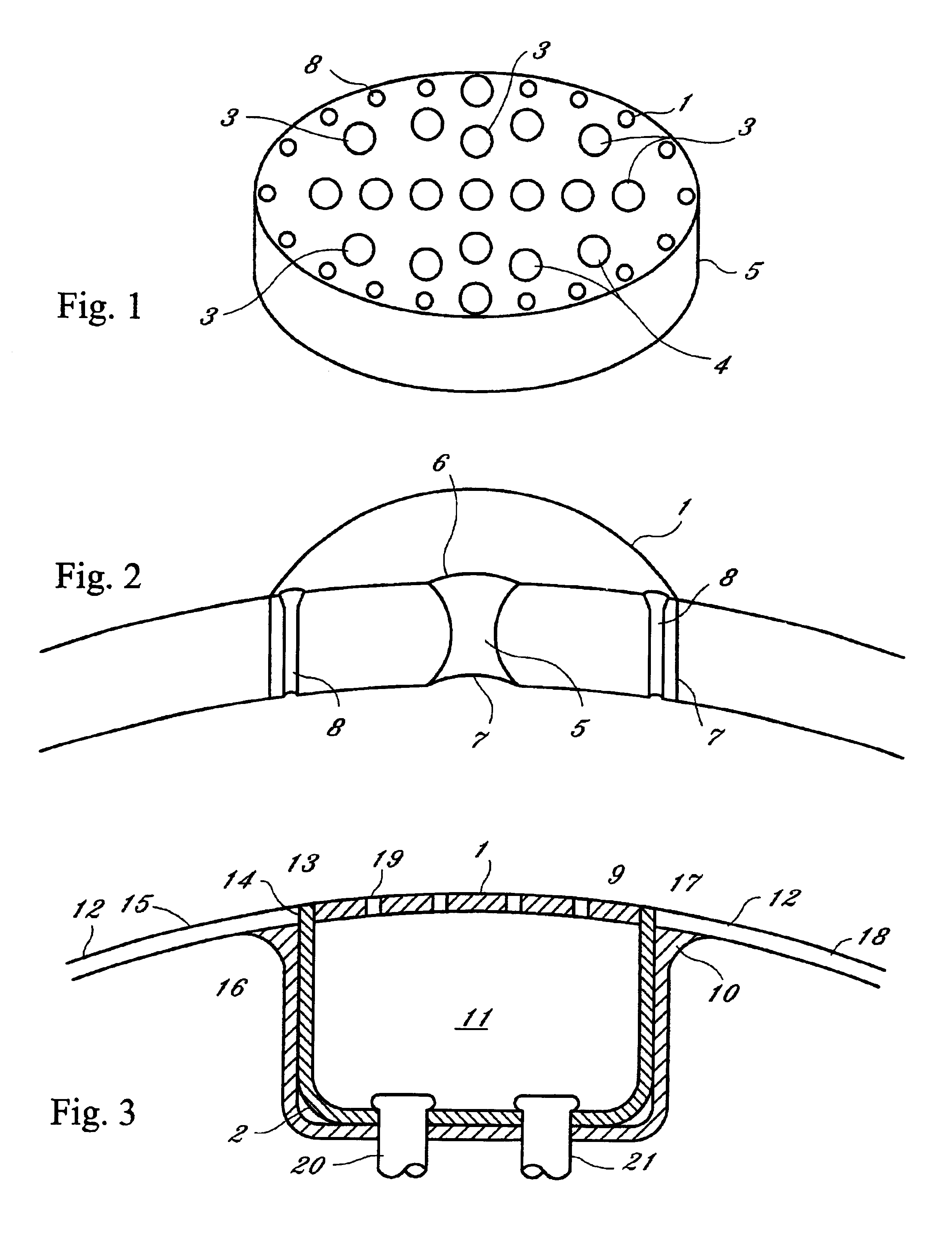Sea chest covers
a chest cover and sea chest technology, applied in the field of sea chest covers, can solve the problems of not entirely alleviating and achieve the effects of reducing the growth of bacteria, enhancing the strength of the cover, and reducing the deterioration of the sea chest within the hull of the ship
- Summary
- Abstract
- Description
- Claims
- Application Information
AI Technical Summary
Benefits of technology
Problems solved by technology
Method used
Image
Examples
Embodiment Construction
[0027]The preferred embodiment of the invention is depicted in the three drawing views. Radii of curved sections are drawn to suggest matching to surrounding hull sections or interior sea chest walls and do not suggest preferred curves. The covers to sea chests are sized to fit the openings of the chests and / or provision in hull design to support the covers, as are the liners.
[0028]FIG. 1 is a perspective view of a typical sea chest cover 1 having a thickness whose actual dimension is a function of actual location on a hull and actual pressures imposed on it. FIG. 1 shows a plurality of holes 3 spaced about 2″ on center 4 and having diameters that allow for the flow rate of water required. These holes are tapered 5 as depicted in FIG. 2 showing upper 6 and lower edges 7 of the holes 5 possessing a radius of curvature for increased flow adjacent the upper and lower edges. FIG. 1 shows a series of circumferential holes 8 through the cover 2 countersunk to allow tapered flat head bolts...
PUM
| Property | Measurement | Unit |
|---|---|---|
| tensile | aaaaa | aaaaa |
| sheer strength viscoelastic | aaaaa | aaaaa |
| strength | aaaaa | aaaaa |
Abstract
Description
Claims
Application Information
 Login to View More
Login to View More - R&D
- Intellectual Property
- Life Sciences
- Materials
- Tech Scout
- Unparalleled Data Quality
- Higher Quality Content
- 60% Fewer Hallucinations
Browse by: Latest US Patents, China's latest patents, Technical Efficacy Thesaurus, Application Domain, Technology Topic, Popular Technical Reports.
© 2025 PatSnap. All rights reserved.Legal|Privacy policy|Modern Slavery Act Transparency Statement|Sitemap|About US| Contact US: help@patsnap.com


